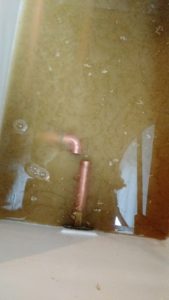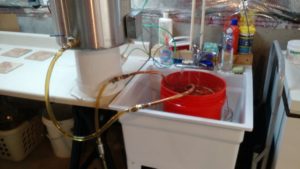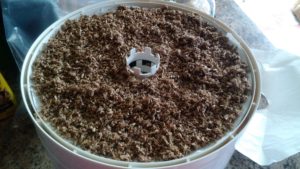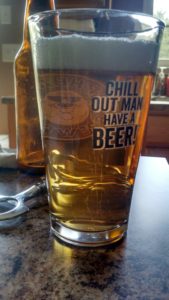Tag Archive: competitions
Brew United Competition Soapbox
In amateur radio contests, there is something called a soapbox. It is text about the contest, things like how it went, equipment used, things tried, etc. It’s optional and I’ve only used it once when I blew up a radio halfway through a contact and decided to put something like “I killed my radio in this contest. I left it all on the air”. I thought I was being funny, but I’m not sure anyone else noticed.
Anyway, this is not something I’d do often. Unlike amateur radio contests (which are planned and frequently prepared for, like a race or other sporting event), up until now all of my competition entries have been afterthoughts – I brew a good beer and then decide to enter it into a competition. This is because I’m like many other homebrewers (well, the smart ones, anyway) and I brew what I like. I don’t need a medal or ribbon to tell me I’m pretty good at this or when I screw up (which is rare! knock knock… FUCK [read on]). However, after my other competition entries (only two), I like reading the judge’s comments. This is particularly because the judge’s comments are generally really nice (or maybe I do make some damn good beer). Reading many of the comments puts far less emphasis on the number and allows for a realistic view of what they thought. And my first contest made me realize that commercial examples aren’t always great representations of the style, no matter how much you like them!
However, the Brew United contest was different. For starters, you have four grains that all must be used – pilsner, flaked wheat, crystal 60, and Munich 10. You also have to use exactly two from a list of six hops. You also have a slightly abbreviated list of styles. You also have prizes (I really want one of those SS Tech steel fermenters)!
My Beer
I decided to brew a Kölsch. This was partly because I wanted to use that new fermentation chamber I’ve been talking about. If I was just brewing any Kölsch, I’d probably be 90-95% pilsner and something like 5% honey malt and possibly 5% of something else.
This is different. I’m required to use at least 1% of crystal 60. And wheat.
So I got to thinking, Moerlein did a beer called “Altered Pale Ale”, which was a pale ale with a large contingent of wheat. It had some smoothness that I liked. So I decided to use a few pounds of wheat in addition to mostly pilsner malt so I could keep it light and within style but possibly add some smoothness without adding turbidity (haziness… I’m an engineer). I used even less of the Munich 10. I would have preferred crisp over malty for this, but I do want some sweetness that the Munich 10 might be able to bring. And that damn crystal 60. I used 2 ounces, which makes it 1.3% of the grain bill. I was even joking with the people at my LHBS that this is the first time I’ve ever bought just 2 ounces of a malt!
This arrangement of malts means no toasting or cold steeping, which are two things I did not want to get into.
My hops were Northern Brewer and Perle. German hops for a German beer. I was initially thinking Saaz instead of Northern Brewer, but that’s really more of a Czechoslovakian hop.
The Recipe
Recipe Details
| Batch Size | Boil Time | IBU | SRM | Est. OG | Est. FG | ABV |
|---|---|---|---|---|---|---|
| 5.5 gal | 60 min | 27.1 IBUs | 4.2 SRM | 1.046 | 1.008 | 4.9 % |
| Actuals | 1.04 | 1.008 | 4.2 % | |||
Style Details
| Name | Cat. | OG Range | FG Range | IBU | SRM | Carb | ABV |
|---|---|---|---|---|---|---|---|
| kolsch | 5 B | 1.044 - 1.05 | 1.007 - 1.011 | 18 - 30 | 3.5 - 5 | 2.4 - 3.1 | 4.4 - 5.2 % |
Fermentables
| Name | Amount | % |
|---|---|---|
| Pilsen Malt 2-Row (Briess) | 5.5 lbs | 57.14 |
| Wheat, Flaked | 3 lbs | 31.17 |
| Munich 10L (Briess) | 1 lbs | 10.39 |
| Caramel/Crystal Malt - 60L | 2 oz | 1.3 |
Hops
| Name | Amount | Time | Use | Form | Alpha % |
|---|---|---|---|---|---|
| Northern Brewer | 0.5 oz | 60 min | Boil | Pellet | 8.5 |
| Perle | 1 oz | 15 min | Boil | Pellet | 8 |
Miscs
| Name | Amount | Time | Use | Type |
|---|---|---|---|---|
| Irish Moss | 1.00 tsp | 15 min | Boil | Fining |
Yeast
| Name | Lab | Attenuation | Temperature |
|---|---|---|---|
| German Ale/Kolsch (WLP029) | White Labs | 75% | 65°F - 69°F |
Mash
| Step | Temperature | Time |
|---|---|---|
| Mash In | 148°F | 60 min |
Brew Day
Before actually getting to brew day, I started checking things. Last time I brewed, I found that I may have missed my mash temp. So I decided to check to be sure. Sure enough, I stuck my thermometer in ice water and it read about 40ºF! It should have been at 32ºF, so I adjusted it and made sure it was correct by leaving it in the icewater for a while. I also checked my hygrometer. I haven’t been hitting my gravities too well, and part of that may be because my hygrometer was reading 0.004-0.006 low (unless I somehow got distilled water that is lighter than water). I filed away some of the bottom and checked again, and after three or four filings, it was taken care of. I also bought a Ph meter so I could fill in all the little text boxes in BeerSmith.
A stuck sparge. But not just any stuck sparge. This was the stuck sparge from Hell.
Brew day itself started great. I heated my water 10ºF higher than BeerSmith indicated because it appears my PID controller reads low through part of the range. I drained and began mashing out and sparging and then it happened… a stuck sparge. But not just any stuck sparge. This was the stuck sparge from Hell because it wasn’t stuck because of “normal” reasons, it was stuck because the sparge manifold came off.
After manually sparging with a sieve, I was finally able to start the boil. Fortunately, boil went without a hitch. No boilovers or anything, and one minor splash.
Cooling the wort was a bit of a pain. Since I have an electric system (“system” used liberally), I use what is essentially an immersion chiller backwards. It doesn’t work too well, but I thought since I have a new cabinet below my counter (raising the counter up about 6″ compared to the image below), I thought it might work better. It didn’t.
I’m definitely going to put a pump on it for next time, and probably also a way for the wort to go back into the kettle and create a whirlpool. I bought a plate chiller. Anyway, this got the wort down to about 90ºF. Too hot to pitch and I was 30 minutes from guests arriving, so I decided to put the hot wort in the fermentation chamber and let it ride out for a while. I fitted a hose to use as a blow-off tube from the fermenter since I had more than 5.5 gallons in the fermenter.
“I’m wondering if I need to include “one partially sanitized dial thermometer” on my recipe when I send this in.”
After a few hours, I ran downstairs for something and went to check the temperature (and I can’t see the side of the bucket too well) and I sanitized the stem and bottom of my dial thermometer. Unfortunately, it slipped out of my hand. I’m wondering if I need to include “one partially sanitized dial thermometer” on my recipe when I send this in, because that thermometer is staying in the fermenter until bottling!
Brew day ended at about 2:40 PM. It started around 10:00 AM. Timewise, not so bad.
At nearly 9:00 that evening, the wort hit somewhere close to 70ºF and I decided to aerate and pitch the yeast. I sanitized a whisk and stirred vigorously for a minute to aerate, and I managed to NOT drop the whisk in the wort (but just in case, I sanitized the handle, too!). I pitched a good bit of yeast, sealed the top, and shut the chamber.
The following morning, I couldn’t see the temperature (this was because of light, not because it froze or anything) and I decided that for now, I need to ensure things are cooling so I removed the temperature probe from the water jug and let it sit out of it (this should make it more “volatile”).
After the issues I experienced during the mash, I wasn’t even remotely interested in checking my efficiency. But I did want to check progress and taste after a week, so I opened up the laptop and BeerSmith and input the brewing session data I recorded on my tablet. 75% mash efficiency and about 65% brewhouse efficiency. Compared to my last brew, that’s a 14% improvement in mash efficiency and a 5% improvement in brewhouse efficiency and a slight improvement over the brew before that (where I had mash problems and ended up recirculating some mash). So I’m happy despite the difficulties that I’ve since repaired.
After a week of fermenting and some interesting smells in the fermentation chamber and relaxing, trying not to worry, and drinking some homebrew, I opened the fermenter to check gravity and taste. It tasted somewhat phenolic, but I could EASILY tell it needed another week. Color was around where I expected it to be, and gravity was 1.010. Slightly low compared to what BeerSmith thinks it should be, but given the turbidity of the sample it’ll go down.
Spent Grains
I decided to do something I haven’t done before – use the spent grains for something other than compost. I laid a bit of the spent grain out on freezer paper in my dehydrator and set it up. I have the grain about 1/2″ deep. The following morning, there was still moisture under the surface of the grain, so I (using my fingers) turned the grain so other parts could be dried. It took maybe 18 hours (possibly less, I had to work while they were drying). When I checked on them after coming home from work the following day, the basement smelled WONDERFUL. It was a mix between bread and cookies.
the basement smelled WONDERFUL. It was a mix between bread and cookies.
I gave all the spent grains to one of my directs at work that does a lot of baking. I’ll probably keep the next batch once I figure out what to do with it.
The Taste
The final/first taste from the bottle was still a little estery. I saw a recent post by The Brülosopher where he ran into ester problems with (wait for it… WLP029!). I started looking into it (as suggested by one of the commenters on Brühlosopher’s post), and found this post on BeerSmith’s Forum. I may have fermented too cold causing the production of Isomyl Acetate, which is the classic banana ester. I have noticed that there is a major issue between the temperature reported by the Raspberry Pi and the temperature in the chamber.
The Appearance
I’m pleased with the appearance. It is nice and clear and the carbonation seems to me to be correct.
Cheers!



